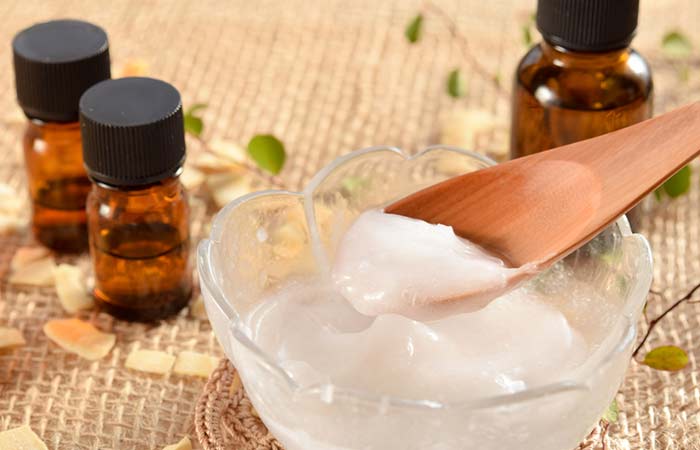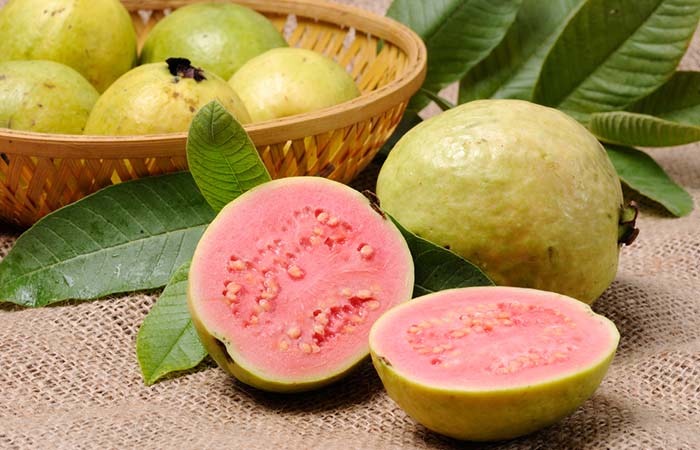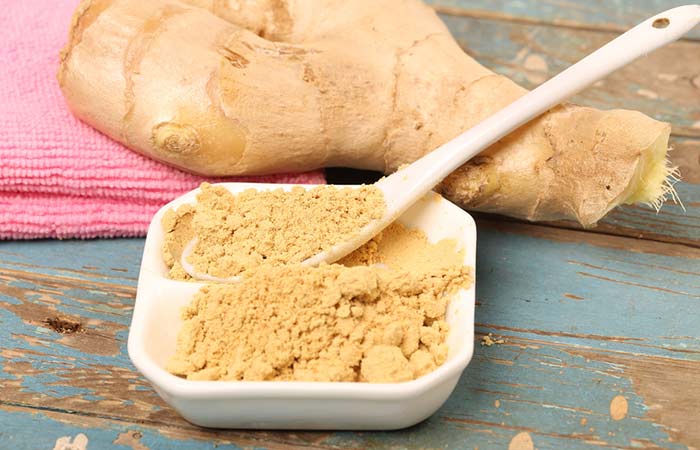Chickenpox
is a highly contagious disease. Rashes that itch like crazy, and fever
that doesn’t seem to go away are its characteristic symptoms. It spreads
like wildfire among people who have not gotten it before, causing more
and more discomfort and pain. The symptoms of this viral infection can
be alleviated by using natural home remedies.
Read on to know more about this disease and what you can do for a quick and easy recovery.
Read on to know more about this disease and what you can do for a quick and easy recovery.
What Is Chickenpox And What Causes It?
Chickenpox is a viral infection caused by the varicella-zoster virus (VZV). It is also sometimes referred to as varicella (1).Signs And Symptoms Of Chickenpox
- Raised bumps that are pink or red
- Blister-like rashes
- Itching
- Fever
- Tiredness and fatigue
- Headache
- Loss of appetite (2, 3)
How Does Chickenpox Spread?
The chickenpox virus can spread very easily by breathing in the same air as an infected patient or touching him/her. An infected person can transmit the disease from 1-2 days before they get rashes until they have healed completely. This contagious period lasts for a few weeks. Even people who took the chickenpox vaccine and still contracted the disease can spread it to others around them (4).Here are the remedies.
16 Best Home Remedies For Chickenpox
1. Aloe Vera For Chickenpox
You Will Need
An aloe vera leafWhat You Have To Do
- Slice the leaf sideways and scoop out the gel present inside. Transfer it to an airtight container.
- Apply this fresh gel on the rashes.
- Leave it on.
How Often You Should Do This
Reapply 2-3 times a day.Why This Works
Aloe vera gel soothes and cools inflamed and itchy skin during chickenpox. It moisturizes the skin, has anti-inflammatory properties, and helps reduce the itching (5). This remedy is safe to use for chickenpox in infants as well.2. Baking Soda Bath For Chickenpox
You Will Need
- 1 cup baking soda
- A bathtub with warm water
What You Have To Do
Add baking soda to the water in the bathtub and soak in it for 10-12 minutes.How Often You Should Do This
Do this every day.Why This Works
Baking soda soothes the itchy and inflamed rashes on your skin. It is also antimicrobial in nature and aids faster recovery from the infection (6). Alternatively, you can also add an antiseptic liquid like Dettol or Savlon to the bath and soak in it for a couple of minutes.3. Oatmeal Bath For Chickenpox
You Will Need
- 2 cups oats
- 4 cups water
- A cloth bag
- Warm water
- A bathtub
What You Have To Do
- Grind the oatmeal and soak it in four cups of water for a few minutes.
- Now, put this mixture in a cloth bag and secure it tightly.
- Place it in the warm water bath and soak in it for a couple of minutes.
How Often You Should Do This
Do this once every day.Why This Works
Soak in the goodness of an oatmeal bath – a tried and tested remedy that just can’t go wrong. Oatmeal helps to soothe and cleanse the infected skin. It relieves the itching by acting as a moisturizing agent. The inflammation of the rashes will reduce to a great extent with this remedy (7).4. Vinegar Bath For Chickenpox
You Will Need
- 1 cup brown vinegar OR apple cider vinegar
- A bathtub
- Warm water
What You Have To Do
- Add the vinegar of your choice to the bath water and soak your body in this for about 15 minutes.
- Rinse with plain water.
How Often You Should Do This
You can do this every alternate day.Why This Works
Both brown vinegar and apple cider vinegar give instant relief from itching, reduce the scarring, and heal the marks or lesions that you are bound to develop. Vinegar also has antimicrobial properties (8).5. Salt Bath For Chickenpox
You Will Need
- 1/2 cup sea salt OR Dead Sea salt
- 1 teaspoon lavender oil (optional)
- Warm water
- A bathtub
What You Have To Do
- Once your bath is ready, add the sea salt and lavender oil to it. Mix well.
- Soak your body in it for 10-15 minutes.
How Often You Should Do This
Do this once every day.Why This Works
The antimicrobial properties of sea salt fight the germs and its anti-inflammatory properties relieve itching (9, 10).6. Calamine Lotion For Chickenpox
You Will Need
- 5 drops lavender oil
- A cup of calamine lotion
What You Have To Do
- Mix the essential oil with the lotion in a bottle. Shake well.
- Apply this lotion on the chickenpox rashes.
How Often You Should Do This
Reapply 2-3 times a day.Why This Works
This pinkish liquid is sure to be on your doctor’s prescription if you are diagnosed with chickenpox. Calamine lotion gives relief from severe itching and also soothes the inflamed skin (11, 12).7. Essential Oils For Chickenpox
You Will Need
- 1/2 cup coconut oil
- 1 teaspoon lavender oil OR eucalyptus oil OR tea tree oil OR sandalwood oil
What You Have To Do
- Mix the essential oil and carrier oil.
- Apply the blend on the chickenpox rashes and blisters.
- Leave it on for as long as possible.
How Often You Should Do This
Apply this oil blend 2-3 times in a day.Why This Works
This oil blend soothes the chickenpox scars and rashes and relieves itching. Coconut oil nourishes and hydrates the skin and relieves itching (13). Lavender oil relaxes and soothes the inflamed skin. It also works as an antimicrobial agent (14). Eucalyptus oil and tea tree oil possess antimicrobial and healing properties (15, 16). Sandalwood oil cools down the skin and reduces the fever with its antipyretic properties (17).8. Neem Juice For Chickenpox
You Will Need
- A handful of neem leaves
- Water
What You Have To Do
- Grind the leaves to get a paste.
- Apply this paste on the rashes and leave it on for a few hours.
How Often You Should Do This
Do this twice a day.Why This Works
The neem tree, or Indian Lilac, is loaded with antiviral and antibacterial properties. It gives instant itch relief. This potent ointment also dries the blisters, thereby accelerating the healing process (18).9. Lime Juice On Chickenpox
You Will Need
- 2 tablespoons lime or lemon juice
- 1 cup water
- Cotton
What You Have To Do
- Dilute the lime juice and apply it on the rashes using the cotton.
- Leave it on for a few minutes and then clean the area with a wet washcloth.
How Often You Should Do This
Do this twice a day.Why This Works
Lime juice acts as an astringent. It contains vitamin C and antioxidants that speed up the healing process of the chickenpox scars and rashes (19).Caution
This remedy may sting slightly. If you find it unbearable, clean the area immediately with plain water.10. Boiled Guava Leaves For Chickenpox
You Will Need
- 10-12 fresh guava leaves
- 2 cups water
- Honey (to taste)
What You Have To Do
- Boil the guava leaves for 10-15 minutes.
- Strain the liquid and add honey to taste.
- Drink this herbal tea while it is warm.
How Often You Should Do This
Have 2-3 cups of boiled guava leaves tea in a day.Why This Works
Guava leaves are often used in Chinese and Ayurvedic medicine for skin infections and irritation. They are rich in vitamin C and also have antimicrobial properties. They lessen the chickenpox rashes and also prevent scarring because of their vitamin C content (20).Caution
If you suffer from hypoglycemia, do not drink guava leaf tea as it lowers blood sugar. People with heart conditions should also refrain from using this remedy for chickenpox.11. Herbal Teas
You Will Need
- 1 herbal tea bag (catnip OR chamomile OR basil OR lemon balm OR licorice)
- A cup of hot water
- Honey
What You Have To Do
- Steep the tea bag or dried herb in hot water for a few minutes.
- Strain the decoction and add honey.
- Drink this tea.
How Often You Should Do This
Have 2-3 cups of your preferred herbal tea (from the options given above) in a day.Why This Works
Herbal teas like chamomile, basil, and lemon balm have a multitude of medicinal properties. They regulate the gastrointestinal system and boost immunity. Their anti-inflammatory compounds and antioxidants aid quick recovery from chickenpox (21, 22, 23).12. Vitamin E Oil
You Will Need
Vitamin E capsulesWhat You Have To Do
- Prick a couple of capsules and pour out the oil present inside.
- Apply this oil on the chickenpox rashes and scars. Leave it on.
How Often You Should Do This
Apply vitamin E oil 2-3 times in a day.Why This Works
Vitamin E oil hydrates the skin and removes the dead and darkened skin cells from the surface. It also exerts an anti-inflammatory effect on the infected skin and heals the rashes with its antioxidants (24, 25, 26). If used in the early stages of chickenpox, this oil will help avoid scar formation.13. Marigold Flowers, Witch Hazel Leaves, And Water
You Will Need
- 2 tablespoons marigold flowers
- 5-6 witch hazel leaves
- A cup of water
What You Have To Do
- Soak the marigold flowers and witch hazel leaves in water overnight.
- Grind this to a paste in the morning and apply it on the rashes.
- Keep it on for an hour or so, and then gently wash it off.
How Often You Should Do This
Do this twice daily.Why This Works
Marigold flower has skin moisturizing properties (27). Along with the antiseptic properties of witch hazel, this remedy kills the infection causing virus and soothes the itchy skin (28).14. Honey
You Will Need
HoneyWhat You Have To Do
- Apply honey on the affected area.
- Leave it on for at least 20 minutes.
- Rinse it off with water or wipe it away gently with a wet tissue or cloth.
How Often You Should Do This
Apply honey twice a day on the rashes.Why This Works
Honey is a natural humectant and the best remedy for those itchy sores and lesions. It will not only reduce the urge to scratch but also help to reduce scarring (29).15. Ginger
You Will Need
2-3 tablespoons ginger powderWhat You Have To Do
Add this to your bath water and soak in it for 20 minutes.How Often You Should Do This
Repeat every day for best results.Why This Works
Ginger has anti-inflammatory and antimicrobial properties. The chickenpox scabs and rashes will start healing, and the itching will greatly reduce with this remedy (30).16. Green Peas
You Will Need
- 200 g green peas
- Water
What You Have To Do
- Boil the peas and crush/grind them into a paste.
- Apply this paste generously on the rashes.
- Leave it on for an hour or so.
- Take a bath with lukewarm water.
How Often You Should Do This
Do this once every day.Why This Works
Ayurveda, the renowned form of Indian medicine that is becoming global, lists the use of green peas for application on blisters and lesions for quick healing. They contain vitamin B6, vitamin C, and folic acid. They fight inflammation, reduce the itching, and soothe the irritated skin (31).While the disease will take its due time to heal, these home treatments can be incorporated to soothe the skin, fight the urge to scratch, and reduce the chances of severe scarring. During the infection and after, it is important to maintain a healthy diet. This will help the body to build immunity against chickenpox and fight the infection better and quicker.
We have listed the diet recommendations for chickenpox below.
Diet For Chickenpox
A well-balanced diet with plenty of fluids can make a huge difference in your recovery. Stick to basics and eat fruits and vegetables in their natural form as they are loaded with antioxidants, disease-fighting vitamins, minerals, and other chemicals that help to make the immune system stronger and fight the infection. Here are the food items you should eat and avoid.What Foods To Eat When You Have Chickenpox?
- Carrot and coriander soup
- Fish (but not shellfish) as it has anti-inflammatory omega-3 fatty acids
- Yogurt as it contains probiotics that boost the immune system
- Mangoes, apricots, papaya, cherries, fig, pineapples, apples, and pears
- Vitamin C-rich veggies like kale, broccoli, peppers, watercress, and spinach
- Grass-fed beef and lamb, chicken, and turkey
- Shiitake mushrooms
What Foods To Avoid For Chickenpox?
- Nuts
- Whole grains such as wheat, oats, and rice as they contain more arginine (Arginine helps varicella virus growth)
- Grapes, blackberries, blueberries, oranges, and grapefruit
- Chocolate
- Caffeinated drinks
- Salty foods as they can cause dehydration
- Spicy food and food high in fats
Risk Factors For Chickenpox
You are at a higher risk of contracting chickenpox if:- You haven’t had chickenpox before.
- You have not been vaccinated for chickenpox.
- You spend a lot of time in and around a school or an area frequently visited by children.
- You live with children.
- You have a weakened immune system due to an immune disorder or medications such as chemotherapy.
Prevention is the best option when it comes to chickenpox. Let’s see how you can avoid contracting this infectious disease.
Prevention Tips For Chickenpox
The best prevention tip for chickenpox is to get the vaccine. It is safe and effective, and is recommended for all children and adults. The vaccine is given in two doses and protects you from the infection.Source Click here
















Comments
Post a Comment